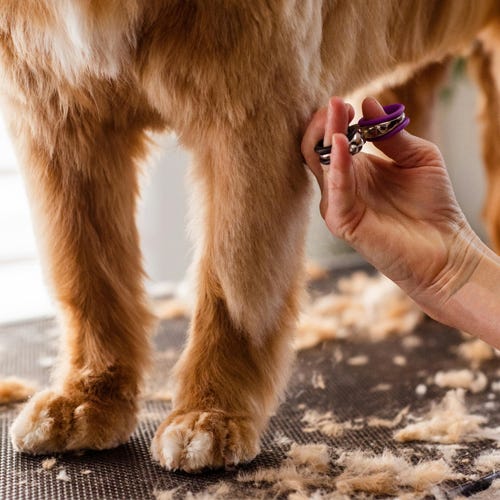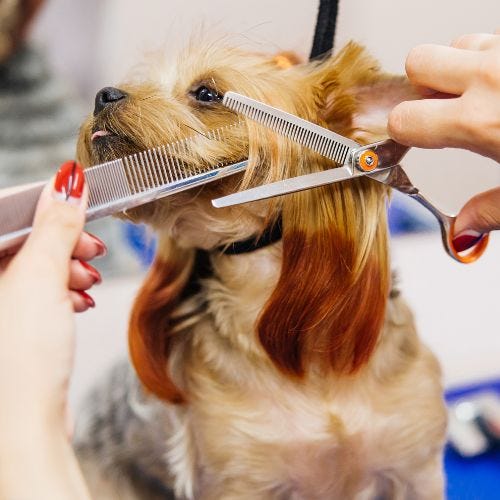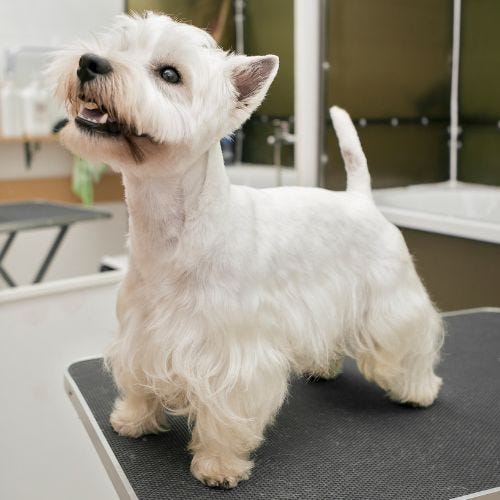4 Main Questions to Ask a First-Time Customer
07/29/2014
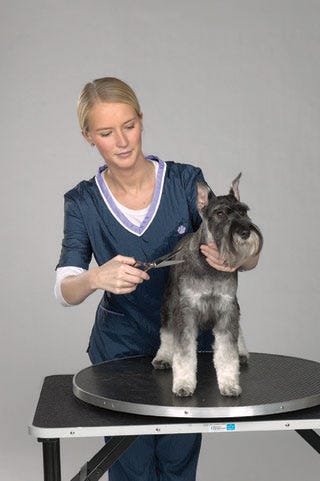
What questions should you ask a first-time grooming client?
You never get a second chance to make a first impression, so it's important to get off on the right paw—er, foot with your first-time grooming clients.
Communication and preparation are key to making that first grooming experience a good one. A happy first-time customer is more likely to become a repeat customer, and repeat customers are crucially important to any grooming business.
So take time before you start grooming to ask some of these key questions:
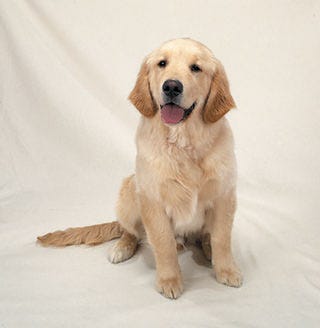
Taking a Client History or
"Can You Tell Me A Little About Your Dog?"
When you greet a client and their dog for the first time, asking about the dog may lead to other detailed questions about the dog's history and behavior patterns.
- Has the dog ever been groomed before? If so, what was that experience like?
- How well does the dog handle strangers?
- Is the dog aggressive toward other dogs?
- Does it react badly to being in a crate or cage?
- Does the dog have any allergies or chemical sensitivities?
- What behavior does the dog exhibit when it's nervous or stressed?
Any behavioral traits that you can glean from your clients can be a big help when it comes to making the dog feel comfortable and protecting yourself from bites.
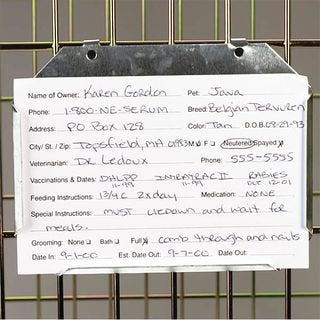
Make sure to fill out a detailed kennel card for every dog on your client list so you'll always have important medical, behavioral and grooming information close at hand.
Requesting a Medical History or
"Does Spot Have all his Shots?"
With any new client, you should clearly outline your shop's policy in regards to vaccinations and medical history.
Does the dog have a history of medical issues that might be important for you to know?
Warts or skin tags can be easily nicked by the unsuspecting groomer. Vision problems can cause the dog to startle more easily, which can lead an otherwise gentle dog to inflict a nasty bite. Arthritic animals may have difficulty getting onto the table or standing for grooming, and may need special accommodations or equipment or a little extra time or TLC.
- Is the dog up to date on all its vaccinations?
- Can the client provide documentation for your records?
Remember, a rabies vaccination is required by law in most states; some may require other vaccinations for canine distemper, bordetella and parvovirus as well.
Check the regulations in your area for guidance on what to ask for. Remember that even when it's not required, vaccinations make good sense when you're working in a place where dogs may mingle.
Your client’s vet will usually provide them with documentation when the animal is vaccinated, and should maintain the information on file to provide to their customers as needed.
Making sure that all of the pets in your shop meet the same standards in terms of medical reporting will help to keep pets from catching something from another dog while they're in your care. Taking a thorough medical history may also prevent problems during the grooming process that may have been easily avoided had you known about them.
Vaccinations make good business sense, too. You don't want your shop to get a reputation as a place where dogs get sick or injured.
Logging detailed medical information will also help to protect you in case of a lawsuit. If you can point to a clearly outlined medical policy and produce detailed records from your clients, you can limit your legal liability.
Discussing the First Groom or
"What Does a Puppy Cut Mean to You?"
Be sure to ask the customer as many questions as possible about what they'd like their dog to look like after their first grooming. By clearly defining their expectations up front, you can reduce the chances that the client will be unhappy with the final result.
Visual cues can be a great way to ensure that you and your client are on the same page. Don't assume that you both have the same idea of what a puppy cut is or what a full shavedown will look like.
One smart idea is to have a portfolio of your grooming work or a reference book with AKC standard cuts to refer to. This will help to ensure that both you and the customer are thinking along the same lines in terms of the cut.
If you use a camera to take a "before and after" picture of the dog when it comes in for its first visit, you can keep these images on file to serve as a reference point for the customer's next visit.
Photographs can also pay dividends when it comes to resolving customer service issues. If a client claims that you didn't groom the dog the same way on the second visit that you did the first time around, having a photo reference on file can be a great way to defend your work.
Scheduling the Appointment and Managing Expectations or
"What time do you need Rover to be ready?"
Before taking in a pet for the first time, it's important to discuss time frames and expectations with the client.
- How long are they expecting the grooming job to take?
- What time will they be picking up their pet?
- What is your penalty for late pickup? What is your cancellation policy?
Clearly outlining the schedule beforehand can prevent you from last minute rush jobs if a client shows up early and wants to know why their pet hasn't been groomed yet.
Alerting your customers about the penalties for late pickup may discourage them from waiting until after hours to pick up their dog. There's nothing more frustrating than having to stay late at the shop because there's a dog whose owner is nowhere to be found.
Do you have a question, comment or feedback for future blog posts? Post a comment here or on our Facebook page. Thanks and happy grooming :)



